Report: How To Use Athlete Monitoring In American Football
Report Foreword – American Football Athlete Monitoring
The report aims to explore how athlete monitoring technology and performance data are being combined with sports science principles to have a meaningful impact on winning football games.
Whilst many factors contribute to on-field success, we have recently seen several football teams making significant improvements in areas that contribute to winning games, both directly and indirectly, through their use of tracking data.
As a result of the distinct competitive advantages offered by performance tracking data, we have seen the vast majority of NFL and Power 5 NCAA teams utilize it, with the majority of them using the world’s most trusted solution in Catapult.
In contrast to this, a much smaller percentage of teams competing in the Group of Five conferences, Division 2 and Division 3 have utilized this data to date, even with the greatly decreased cost barrier.
This represents a clear opportunity for many teams to gain a distinct competitive advantage against opposing teams, as we have seen in other conferences. In this light, we have prepared this report to help guide coaches with some examples of how and why data has contributed to positive change in American Football.
Through reading this report, you will learn how data and high-performance principles are being combined in real-world American football programs to tangibly increase performance, without compromising any core football exposure. How data facilitates teams and coaches to get the most out of their practice sessions, priming for game day. And finally, how to complete the feedback loop by communicating and reporting more effectively to a head coach.
In addition to the content in this report, I have personally witnessed many other American football teams who have significantly benefited in some capacity as a result of tracking data. I’m confident that this data is beneficial for all football teams from those with small staff groups that play on Friday nights to teams that play on Saturdays and Sundays on prime-time TV. I hope this report is thought-provoking and serves as a way to improve the performance of your athletes.
Jamie Hepner – Director of Applied Sports Science
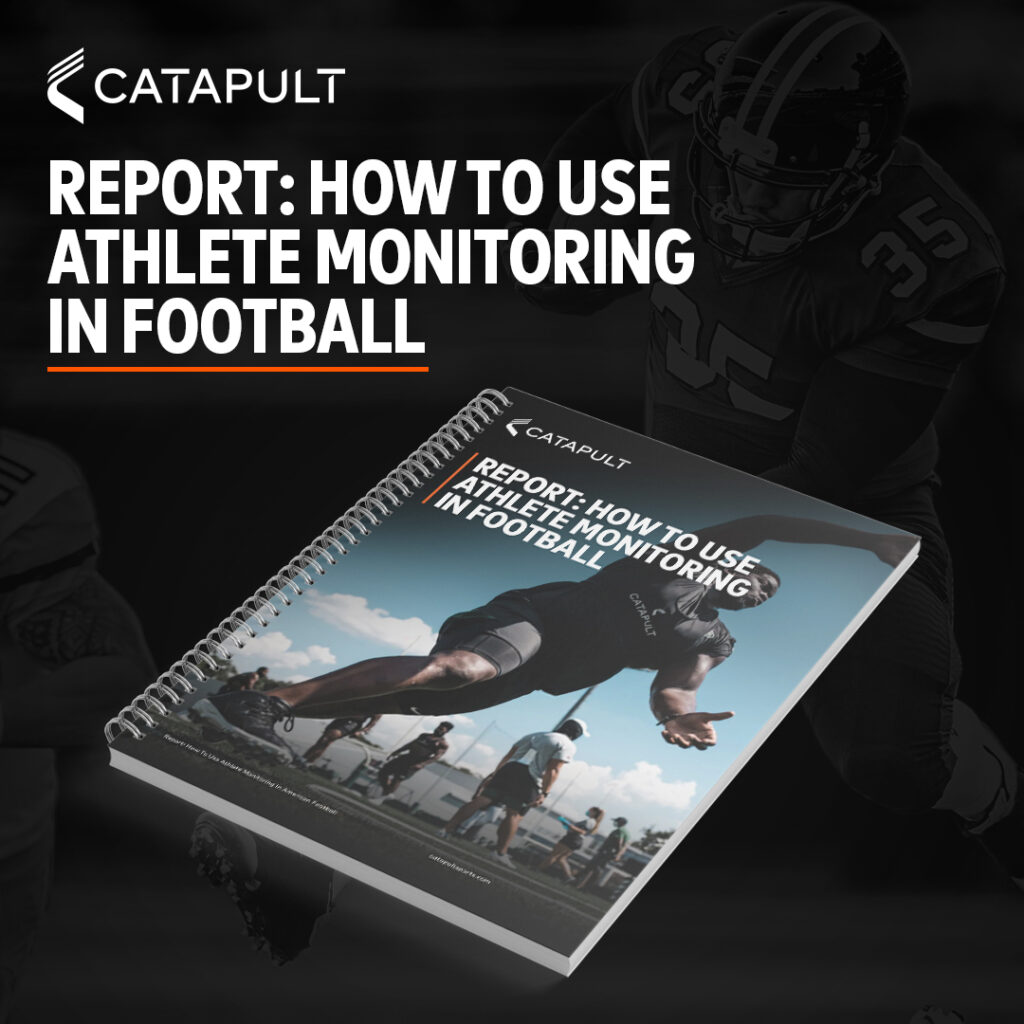
REPORT CONTENTS
- How Athlete Monitoring Will Help You Win
- What is Athlete Monitoring Technology?
- American Football’s Early Adopters
- What Can Coaches Measure?
- Wake Forest University’s 4 Parameters for Athletic Performance
- How to Get the Most Out of Your Practice and Conditioning Sessions
- How to Use Data to Improve Decision Making
- Additional Benefits of Athlete Monitoring Technology
- Solutions for American Football
- The Team Behind Your Team
1. HOW ATHLETE MONITORING WILL HELP YOU WIN FOOTBALL
Despite being a binary concept, ‘winning’ is the result of a complicated series of factors including talent, preparation, and luck. Of course, it is impossible to guarantee success, but there are steps coaches can take to make winning more likely.
Effective use of performance technologies ensures that coaches have relevant and reliable information available to inform the decision-making process.
Put simply, any data that you can bring to the coaching process will enhance the objectivity and effectiveness of your decisions … and this data from athlete monitoring technologies can inform crucial training, selection, and recruitment decisions.
For example, performance data can help you to build a picture of the physical demands of particular leagues and competitions, like the NFL. This can then inform the creation of training plans that prepare your athletes for the specific challenges that they face on game day. Once you are confident in your athletes’ ability to meet key fitness demands, you can start to work on more tactical and skill-based elements.
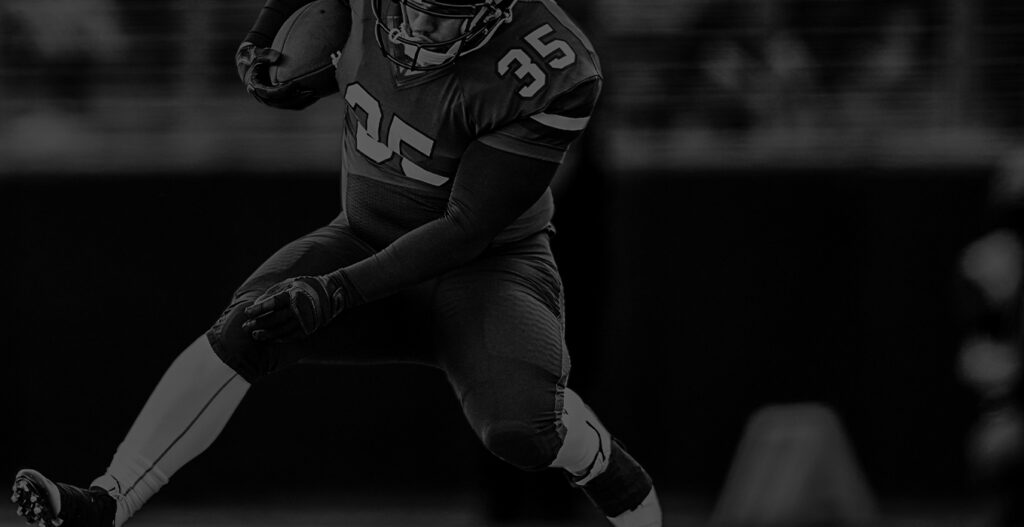
Together, this will ensure that your team is prepared to compete both physically and technically, giving them a better chance of succeeding relative to performance expectations.
By bringing objective information to your selection decisions, it is also possible to maximize the effectiveness of your planning and ensure that you are picking a team equipped to meet the demands of your system or to counter a particular opponent.
Traditionally, decisions and feedback have been informed by a coach’s subjective view of performance, but that can be influenced by a huge number of biases. Given that most coaches have been shown to recall just 59.2% of critical events during games (Laird and Walters, 2008), it’s key that additional systems are used to improve the objectivity of the planning and review processes.
As a coach, you want to do everything in your power to give your team the best chance of success on game day.
So if you can pair objective information with a clear strategy, then you’ll be giving your athletes the best chance of winning on the field.
2. WHAT IS ATHLETE MONITORING TECHNOLOGY?
Athlete Monitoring Prepares your athletes for competition, keeps up with the demands of American football and supports rehabilitation processes.
Athlete monitoring technology, commonly called ‘GPS tracking’ or ‘wearables’, enables coaches to quantify, identify and modify the intensity of training and games and the stresses that are placed on their athletes. With that information, technology:
- Optimizes performance
- Objectifies return to play
- Supports injury risk management
Athlete monitoring or wearable technology is a key tool for measuring physical conditioning, where the internal and external load can be understood. Internal load provides a window into how an athlete’s internal energy systems are responding to an external load (such as weights lifted or distance run in training). This relationship between internal and external load metrics can be a valuable measure of athlete efficiency, helping coaches to clearly understand conditioning levels.
In fact, recent innovations have enabled teams to closely monitor athlete performance across all sessions, facilitating a much deeper understanding of training methods that benefits athletes and coaches alike.
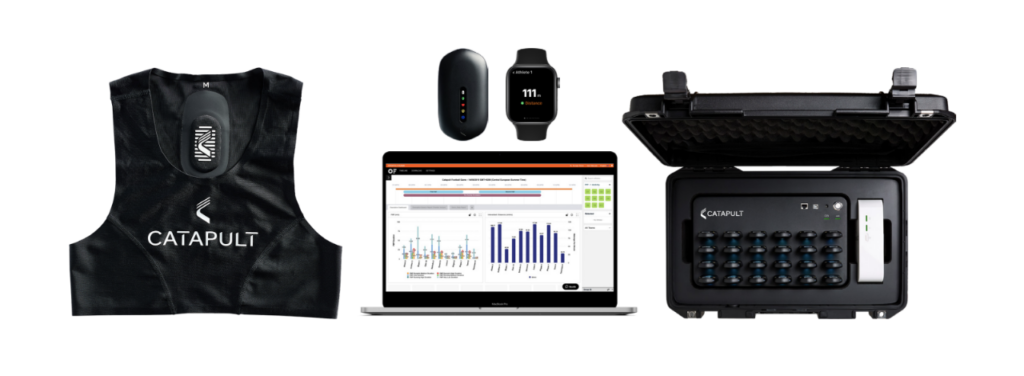
3. AMERICAN FOOTBALL’S EARLY ADOPTERS
Traditionally American football coaches and coordinators have followed the mantra: fitter, faster, stronger. In particular, this has caused a number of strength coaches to lead with a ‘ground and pound’ approach which sees an athlete’s physical development as the most important way to improve performance.
The ‘ground and pound’ approach has led to success in many instances, but it often fails to explain how teams without physical ‘powerhouses’ achieve success on the field.
What leads to the most consistent success is the application of high-performance principles.
The University of Alabama Crimson Tide is one of the early adopters in American football, Head Coach Nick Saban, said:
“I used to always go by feel. Our athletes practiced hard all the time, and when they looked tired I’m saying, ‘We’ve got a problem here. Now we have the technology, the Catapult system, we can measure our athlete’s explosive movements and judge if he is going as fast as he once did and calculate things based on the data.”
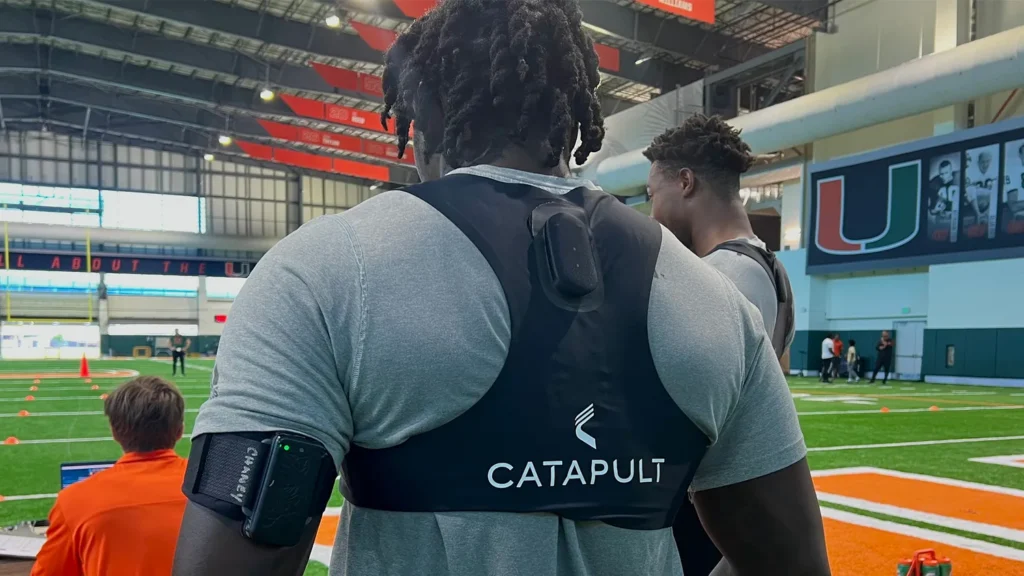
In addition, University of Miami’s Director of Sports Science, Eric Renaghan called athlete monitoring technology ‘an absolute game-changer’:
“I think this generation of athletes is always asking, ‘How can you help me?’ with sports science, with the right infrastructure, the right hardware and the right solutions, we can really be objective with how we make individual athletes better. That’s really what people are looking for,” Renaghan said.
“Most of our guys have the dream of going on to the NFL. If we can help them be more effective while they’re at Miami, potentially they have an opportunity to go on to the NFL. If we can use data and science to help individual athletes improve, I think that’s a really big selling point for recruiting.”
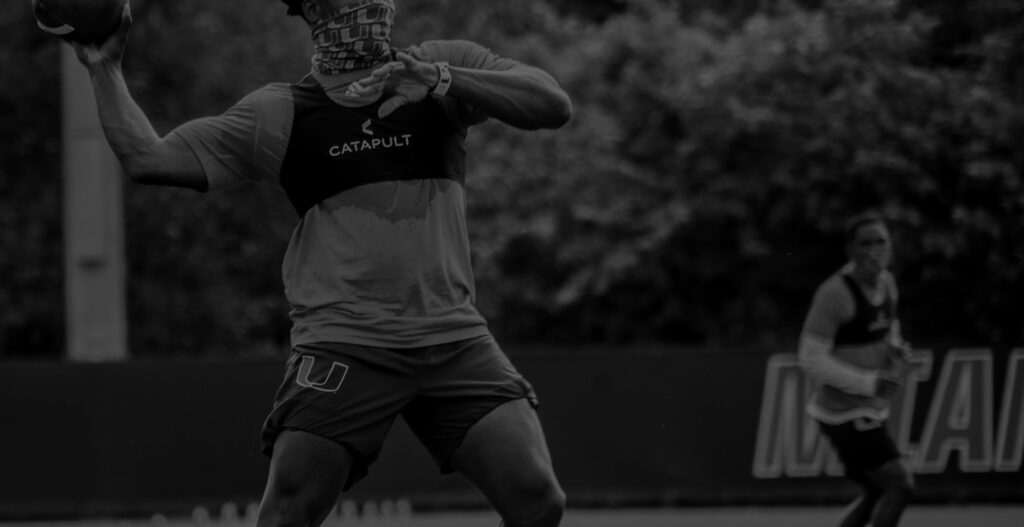
4. WHAT CAN COACHES MEASURE?
By combining inertial sensor data from accelerometers, gyroscopes, and magnetometers with positional information, Catapult data scientists have been able to extract unique data sets that can highlight the specific movements of different positions.
The Catapult Vector wearable provides teams with extremely accurate performance data using GPS and LPS tracking technology, heart-rate monitoring, and inertial sensors. These position-specific metrics, include:
Quarterback Metrics
By tracking each throw a quarterback makes throughout spring ball, fall camp, and regular season games and practices, coaches can manage their workload and keep them performing at an optimal level when it matters most.
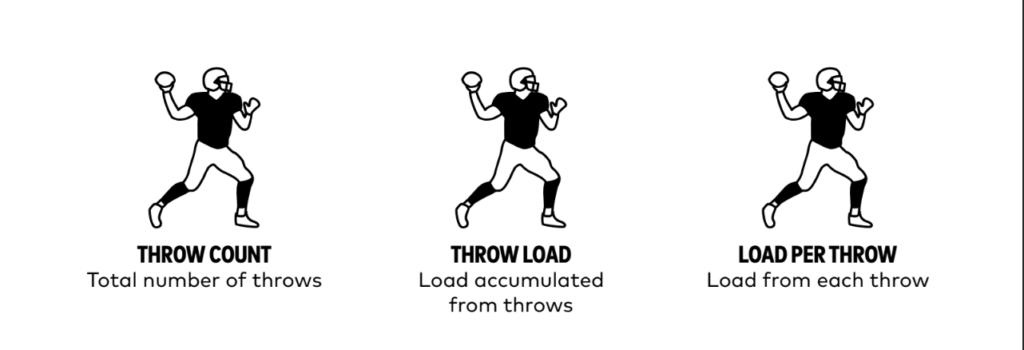
Metrics include:
• Throw Count: Total number of throws.
• Throw load: Load accumulated from throws.
• Load per throw: Load from each throw.
Coaches often use these metrics for additional analysis, combining total load, and throws to better evaluate the workload of each practice. For example, how much load does a quarterback accumulate between throws? Does an intense aerobic practice impact throws? How do the physical demands of practice compare to games?
Linemen Metrics
Triggering from contacts immediately following linemen entering a stance, the Catapult device quantifies linemen workload by evaluating their contacts and contact load.
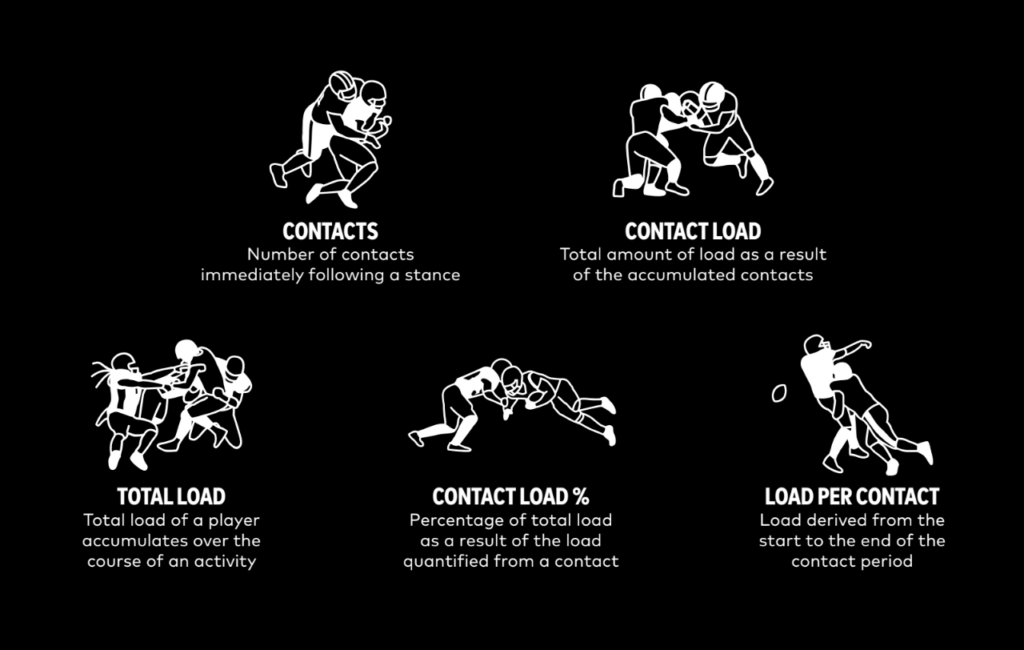
Metrics include:
• Contacts: Number of contacts immediately following a stance.
• Contact load: Total amount of load as a result of the accumulated contacts.
• Total load: Total load of a player accumulates over the course of an activity.
• Contact load %: Percentage of total load as a result of the load quantified from a contact.
• Load per contact: Load derived from the start to the end of the contact period.
Player Impacts
Player impacts uses a window of PlayerLoad to generate peak periods of acceleration. Within those periods, additional feature sets within the raw data are leveraged via machine learning to identify when player impacts occur.
This captures collisions (tackle and tackling), blocking, significant contacts, and athletes going to the ground without additional player contact.
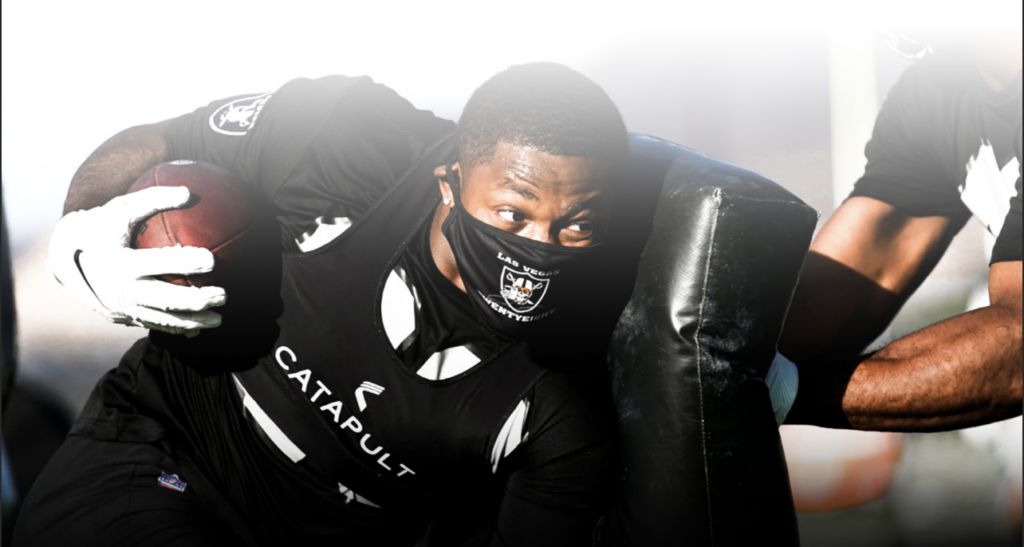
5. WAKE FOREST UNIVERSITY’S 4 PARAMETERS FOR ATHLETIC PERFORMANCE
Since Wake Forest University adopted a high-performance philosophy, they have achieved bowl eligibility for six straight seasons, started the 2021 season 8-0, and more recently became ACC Atlantic 2021 Division Champions.
Wake Forest Head Coach Dave Clawson has been credited for much of this success with many citing his ‘Moneyball’ approach, baseball’s version of high performance. Clawson told ESPN back in November 2021: “We cannot take lesser talent and win the race … so we had to change the race.”
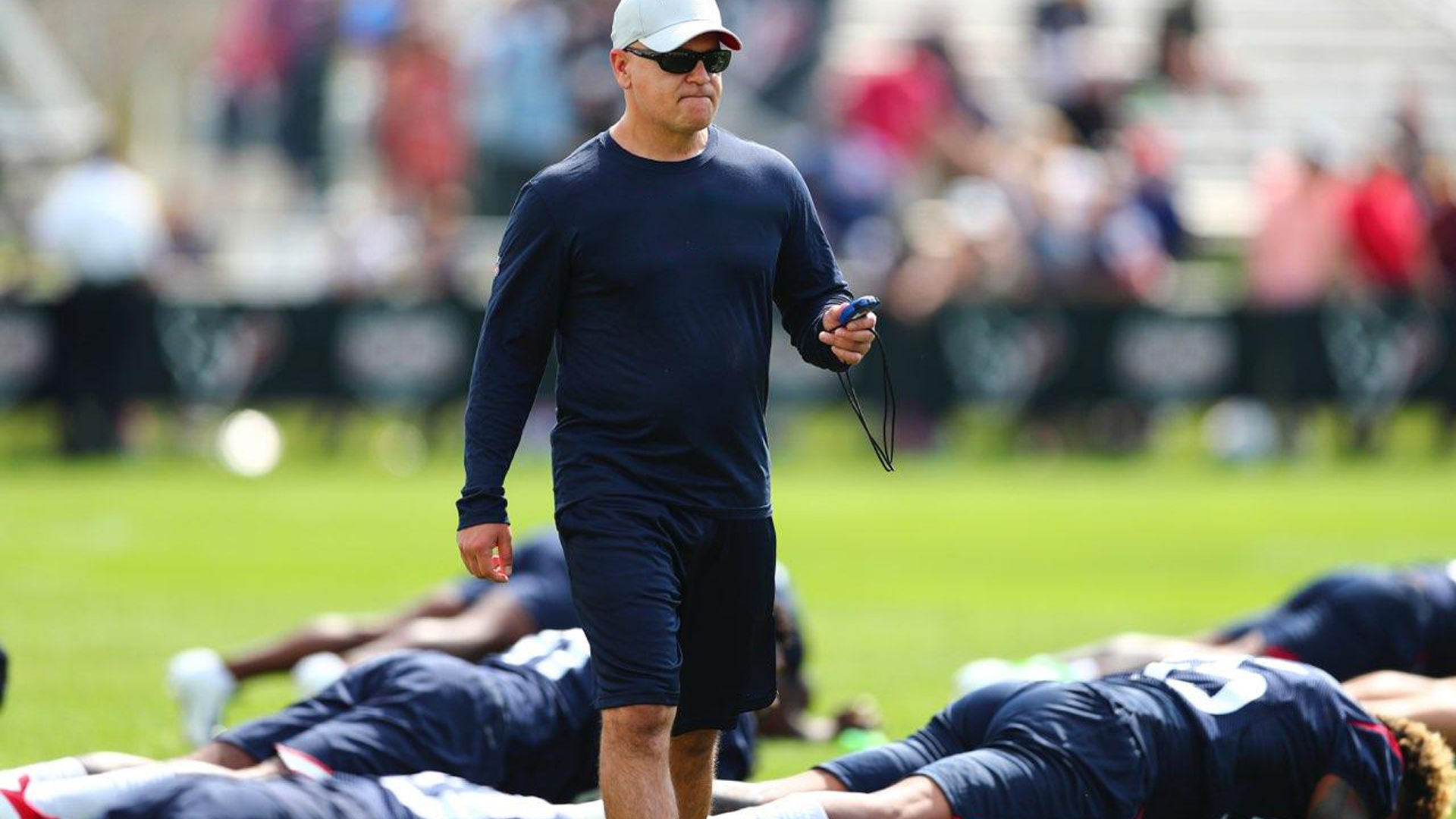
Clawson joined the Demon Deacons back in 2014 and throughout that time, the progressive head coach has amended his football philosophy multiple times.
But one decision that has been instrumental in the team’s recent success was the decision to hire Jason George. George operates in a novel role: Director of Integrated High-Performance.
At the time of George’s hiring, it was met with many questions, not because George lacked experience but because the role of Integrated High-Performance was yet to be cemented within a successful or notable NFL and NCAA football team.
Prior to his time at Wake Forest, George enjoyed an 11-year strength and conditioning-centred career with various NFL teams, including the Houston Texans, Chicago Bears, Jacksonville Jaguars, and the Denver Broncos.
Because of his vast experience, those who do not know George often wrongly assume he is stuck in his ways and very much a ‘ground and pound’ type of guy. But this couldn’t be further from the truth.
Instead, George has become a thought leader for high performance in American football and so, we asked him to share some insights for you to take away:
George shared four parameters that practitioners need to be aware of in order to develop their program’s goals and a unified approach across the many different departments seen in a football organization. In doing so, coaches can move away from solely using the fitter, faster, stronger mantra.
Four Parameters:
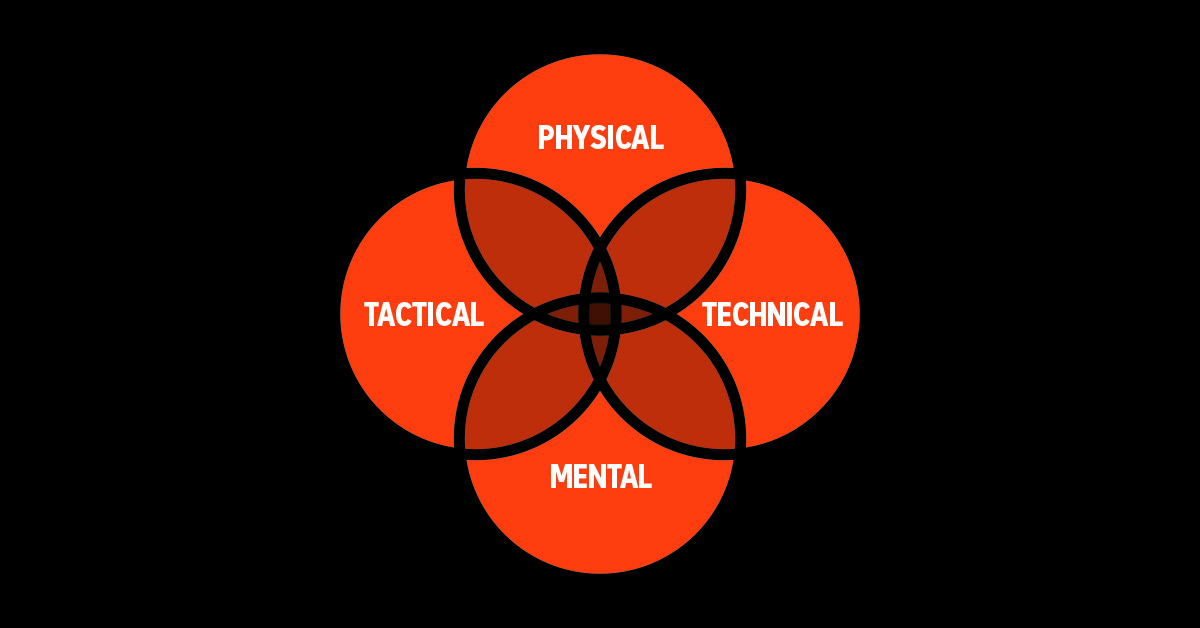
“No single parameter supersedes any other, they are equally important in the realm of high performance. In fact, they intersect and overlap,” said George.
“Allowing yourself to adopt a multi-parameter (or high-performance) philosophy, then sets you up to develop considered goals which different football departments can align on,” said George.
Using this approach, George has gained a seat at the decision-making table with Head Coach Clawson. Together, they have developed their overarching goals at Wake Forest.
Wake Forest Football Program Goals:
- Develop a unified philosophy.
- Improve communication.
- Assure goal alignment across departments.
- Use data to measure our outcomes.
“Sports scientists (or high-performance practitioners) have a specialist role in an American football program. Put very simply, sports science is the use of data to drive decision-making both on- and off-field,” said George.
“This sentiment does not, however, mean that sports science replaces coaches … very much the opposite. Going back to our parameters, it intersects with the art of coaching and a practitioner’s experience and perspective.”
In American football, sports science “has a bad name, as many think it is going to undermine the experience they have built up over the years … but to ensure it works for you rather than against you, you have to use valid and reliable technologies.”
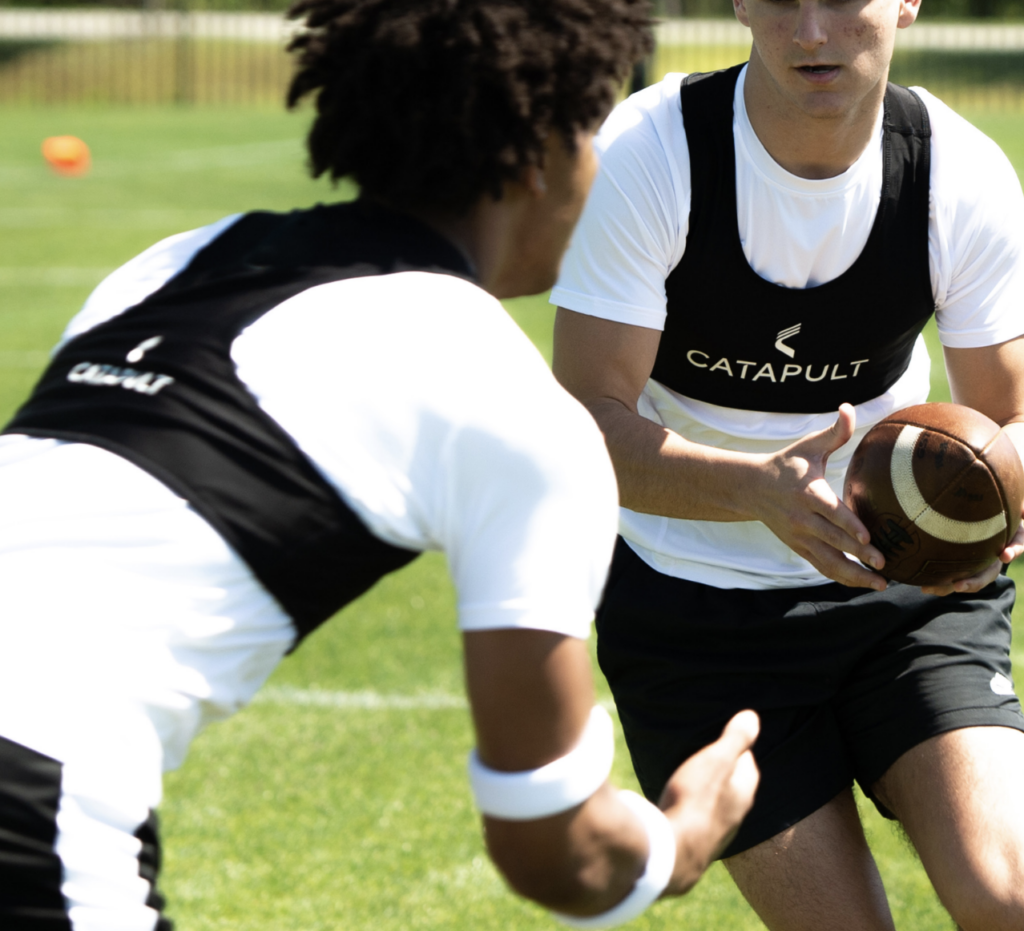
6. HOW TO GET THE MOST OUT OF YOUR PRACTICE AND CONDITIONING SESSIONS
There are many factors that can go into winning (i.e. play calling, unforced penalties, pregame highlight videos); however, the ultimate contributor is putting the best team possible on the field. The best teams can usually be characterized by athletes who:
1. Know what to do and are skilled enough to do it
It doesn’t matter if your best athlete runs a 4.15s in the 40-yard dash if he can’t remember to run a slant at three steps instead of 10, or can’t catch the ball the odd time it’s thrown to them.
2. Are conditioned to levels required during games
It also doesn’t matter that your defensive tackle can squat 800lbs if they can’t run onto the field before the play clock expires, or give effort for three plays.
3. Have a full tank on game day
The best team operates at the greatest capacity possible over the entire season. Like a seesaw, when the competition level rises, the talent disparity between the best teams and worst teams lowers. Consequently, the margin of error in a play, in a game, and in a season shrinks.
4. Are healthy enough to play
If your critical athletes are not available for games, it probably didn’t matter that they dominated most of fall camp.
Achieving these 4 key components begins with an understanding of the game and how the human body adapts and reacts to stress.
American Football isn’t track & field
Before American football coaches can plan a conditioning session, or script a practice, it is important to know what the actual game requirements for each position are. Accumulating data from wearables is a phenomenal shortcut to achieving this information. A few of the many metrics that can be gained include the volume of work (i.e. PlayerLoad), high-speed efforts, quickness, and contacts.
Understanding what your athletes are required to do in a game is the first step in optimally training them for competition.
Fitness vs Fatigue
Once in-game demands and intensities are known, we can set a weekly practice plan for use during the season. For example, a game exposes the starting defensive backs to a 600 PlayerLoad amount of work. In addition, each game requires around 40 high-speed efforts (12+ mph) totalling 700 yards in distance.
If these are their normal demands on game day, including special teams, it would stand to reason that achieving similar numbers a day or two before the game would not be ideal. The only gain that occur a day, or week, before competition, is fatigue.
Athletes cannot expand their gas tanks in such a short time frame, they can only burn the gas already there. The best teams are at their optimal capabilities on game day. Therefore, tapering practices as games draw closer is vital.
The other side of the coin is that if athletes are not exposed to some of the game-like speed and volume demands in practice, then they are more likely to perform poorly and be more prone to injury, during the games 5,6, and 7 of a season.
In general, having one practice that approached game-like demands early in the week (3-4 days before competition) with each subsequent practice decreasing about 25% from the previous one is a good starting point. This means the week would look something like this:

There are several variations of this template. For example, Thursday and Friday could be switched where Thursday becomes a walk-through and Friday becomes a primer practice. Also, some teams may switch the off day from Sunday to Monday. The main idea, however, is that athletes begin to refill their gas tanks several days after games.
Camping for Success
Fall camp is a time for great excitement; summer is over and the season is near.
This also happens to be the greatest chance for injury, and the worst time to lose someone due to injury.
Athletes often go from conditioning two or three times per week, to practicing six times per week, often after a week off. This means we could see an increase in workload in excess of 200% over what the athletes have been chronically exposed to.
Any injury in camp not only has an effect on the athletes’ ability to get ready for the season, but also has a large potential to impact their ability to play in the first few games of the season. Since American football is a sport with relatively fewer competitions, every game matters.
Therefore, it’s important to gradually increase the physical demands placed on the athletes over the full course of camp.
The five-day acclimatization period in football attempts to curb the injuries resulting from early contact. What it doesn’t account for is the addition of all the individual and seven-on-seven periods coaches add to replace the hitting.
Consequently, the distances run by the skill positions during these “shorts” practices are often far greater than what they were exposed to during summer, and what they will be required to do in-season. This also places them at a greater risk of injury the following week, which just so happens to also be when the pads come on.
Using the weekly volume example from above, a fall camp calendar may look like this:
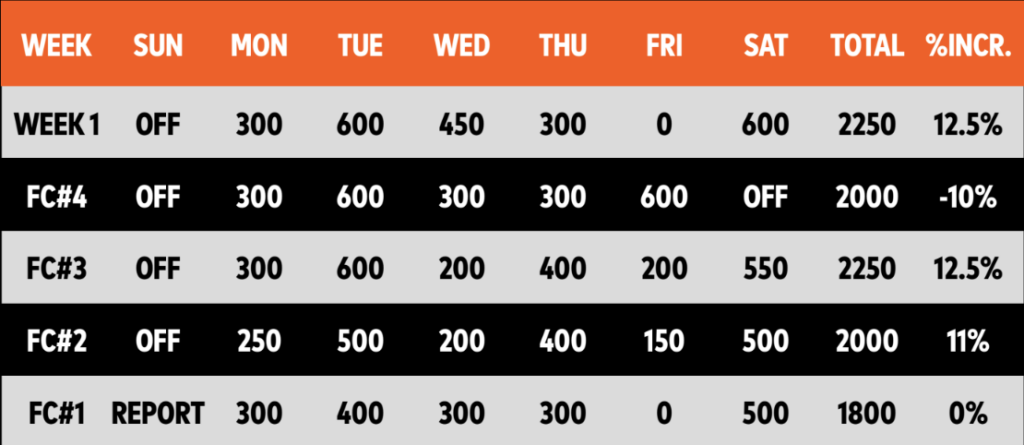
What this calendar attempts to achieve is a general progression in terms of weekly volume towards that required for the season. There is also a variation in the day-to-day workload exposures placed on the athletes so that they do experience game-like demands, but with the opportunity to recover so as to limit the injury potential of several high-demand days in a row.
With the fall camp calendar established, we can now see the volume of conditioning needed during the summer to ensure that the transition to camp is appropriate. Use of the same gradual progression philosophy applied over the eight weeks of training should mitigate some overuse injuries that tend to occur during the summer as well. The same can be said for establishing winter conditioning guidelines to meet the demands of spring practice.
If any of your athletes, especially your mentally strongest ones, are showing signs of irritability, poor attention in meetings, and constantly being sore, they could be experiencing overtraining.
The problem is these times of overtraining often occur during the most critical times of learning such as spring practice and fall camp. In addition, once a state of overtraining is attained, it can take several weeks to months for the body to recover. Proper structuring of practices, with an eye towards recovery, can mitigate these “dark days” and instead provide more valuable and productive practices.
7. HOW TO USE DATA TO IMPROVE DECISION-MAKING
When it comes to communicating data-led insights, it is vital that you use all the tools at your disposal to engage and ensure people fully digest the information you present them with.
It is here that athlete monitoring technologies can serve to support the way you deliver key performance messages.
Coach-to-Athlete Communication
Making difficult decisions is an unavoidable part of coaching, so being honest with athletes and making them aware of your rationale is an important aspect of people management and squad harmony.
If you are able to justify selection and performance decisions with supporting data, then you will be able to communicate in a way that removes negative emotion and grounds your choices in objectivity.
By using technology as both a practical and educational support, you can underpin your communication with objectivity and empower your athletes with clear, powerful and actionable insights.
Coach-to-Coach Communication
Performance staff and video coordinators spend countless hours analyzing athlete data and video footage, allowing them to gather the key insights their coaches need to improve team performance.
But often what gets forgotten about or not given enough attention is the presentation and delivery of those insights to a head coach.
According to the Director of Research and Development at Seattle Seahawks, Patrick Ward, this is an area of performance analysis in which most American football staff can and should look to improve.
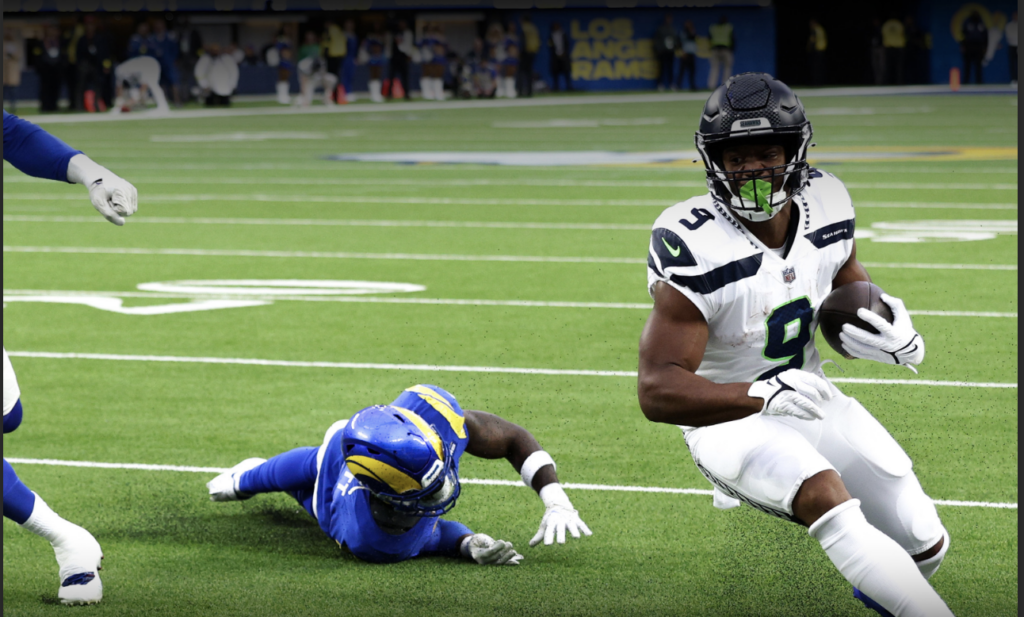
5 Ways to Improve Communication, according to Seattle Seahawks
Ward says, too often he has seen so much hard work and important research tossed aside. Why? Because the information presented was hard to understand, digest, and then integrate into training practice. Here are Ward’s five best practices:
1. Structure your communication
Team personnel should present their insights and findings using the Data Problem Solving Cycle – more commonly known as the PPDAC cycle. The PPDAC cycle framework allows users to describe the problem, outline a plan of action, and show related data and analysis before reaching final conclusions and next steps.
The cycle provides a framework that enables you to effectively structure your communications, making it easier for your head coach to understand the insights that took you a long time to collect, analyze, and report on.
2. Be objective and avoid opinions
Too often, subjective insights are shared but it is important to remember that “nobody is paying you for your opinion … so be objective, direct, and avoid jargon,” says Ward.
Applying and using data in your communications is a great way to avoid being subjective. Data can and should act as the conduit through which you deliver your performance & video insights to head coaches.
3. Be clear when conveying the message
There are a lot of insights and improvements that can be made within an American football team but it can be difficult for your head coach to digest those insights, in the limited time they have.
Ward says: “Communicate the bottom line first … imagine you only have five minutes with your head coach, so you can decide what information you must deliver.” The insights you must deliver are typically those that have the greatest impact on the team achieving their performance goals.
4. Refrain from leaving data open to interpretation
With modern technologies, collecting data is not a problem. For example, Catapult Vector, is able to capture 900 data points per second.
The challenge for users comes from sifting through this data. Ward quotes IT innovator and teacher, Stephen Few: “For data to be useful, it must inform, matter and deserve a response.”
So avoid over-presenting copious amounts of data, leaving it over to interpretation. Instead, ensure you deliver a smaller subset of data that is going to change team performances, training design, and/or head coach decision-making.
5. Learn your learner
Each head coach is slightly different. They all have unique ways in which they interpret and prefer insights to be delivered to them.
Analysts and performance staff should narrow in on the best way to communicate with their head coaches. It took some time, but Ward and Seahawks Head Coach Pete Carroll have managed to align on what the delivery expectation is and what presentation style Carroll finds easiest to understand and take action upon.
To learn your learner, have a conversation with your head coach to identify what they like to see within the reports delivered to them. This is often an iterative process, but through having candid conversations, the presentation of insights and data will better align with what a head coach engages with best.
More About Patrick Ward:
Ward’s research interests include training and competition analysis as they apply to athlete health, injury, and performance across a variety of sports. Patrick has a Ph.D. in Sports Science from Liverpool John Moores University and is a National Strength and Conditioning Association Certified Strength and Conditioning Specialist (NSCA-CSCS). Follow him at @OSPpatrick
8. ADDITIONAL BENEFITS OF ATHLETE MONITORING TECHNOLOGY
Talent Identification
A strategic priority for many elite NCAA programs is to build an environment that produces athletes who are equipped to make the jump into the professional game. With only 2% of NCAA football athletes making it to the NFL, talent identification and nurturing are key.
Athlete monitoring technologies not only help you to identify potential elite talent, but they also enable you to attract the most exciting talents at the high-school level to your university.
As top prospects and their families go through the college recruitment process, they select the program that delivers them the tools needed to reach the pinnacle of the game. Using monitoring technologies demonstrates your commitment to your athletes’ safety, well-being, learning and development, and, in the event of injury, their successful return to play.
More than 80% of Power 5 programs trust Catapult, and 25 of the athletes taken in the first round of the 2021 NFL Draft wore Catapult monitoring devices during their collegiate careers.
Injury Risk Reduction
One of the key functions of athlete monitoring technologies is helping NCAA programs to use performance data to reduce injury risk among their athletes. As many sports become increasingly physically demanding, it can be challenging to maintain high rates of athlete availability.
Injuries cost NCAA programs up to an estimated $1.5 billion per year (Fair., et al 2018), with athletes getting 8.1 injuries per 1000 contact exposures (López-Valenciano., et al 2019), some of the highest figures in American Sports.
By monitoring athletes with our technology, coaches can reach an enhanced, objective understanding of the physiology of their athletes. It is possible to identify the ‘red flags’ that are associated with injury.
Next Generation of Talent
Not only does technology bring extra layers of context to preparation, roster management, and player evaluation. Technology and data also offer benefits during the scouting and recruitment of the next generation of talent.
As top prospects and their families go through high school and collegiate recruitment processes, they select the programs that deliver the tools needed to reach the pinnacle of the game.
Using the latest technology demonstrates your commitment to the athletes’ safety, well-being, learning and development, and, in the event of injury, their successful return to play.
Athletic departments have already invested heavily in facilities and equipment, and now, technology and data will play a big part in attracting football’s next generation of talent.
9. SOLUTIONS FOR AMERICAN FOOTBALL
VECTOR – PERFORMANCE DATA
Comprehensive player analysis from monitoring player development to injury rehabilitation and mitigation.
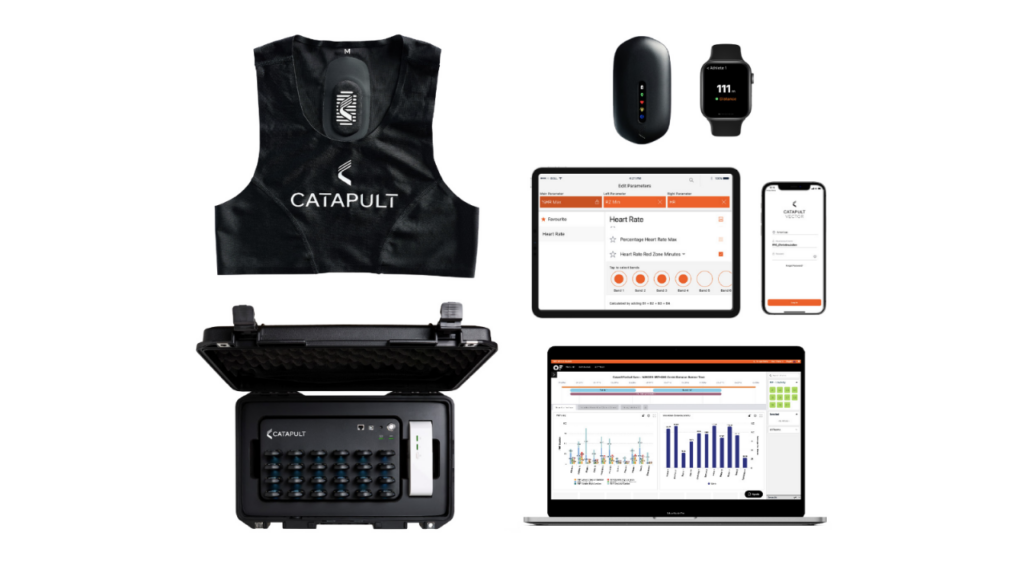
THUNDER – VIDEO SOLUTION
Improve the speed, efficiency and impact of your video analysis. Upload video and data to gain insights that inform strategic coaching decisions.
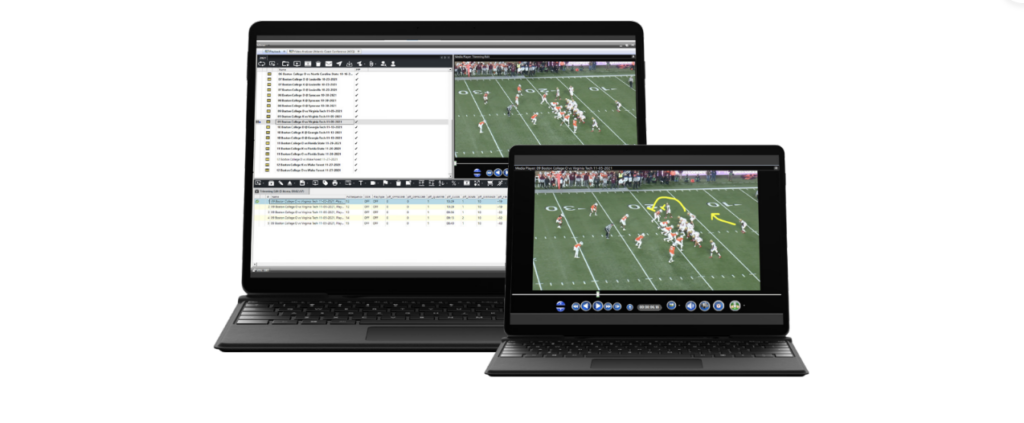
SCOUT – ATHLETE RECRUITMENT
Recruit smarter with access to over 25K athletes. View draft boards, player cards, and more all in one place. A trusted recruitment platform for over 200 teams.

CATAPULT ONE
Measures the core metrics that improve performance, reduce the risk of injury, and develop coach to player communication.
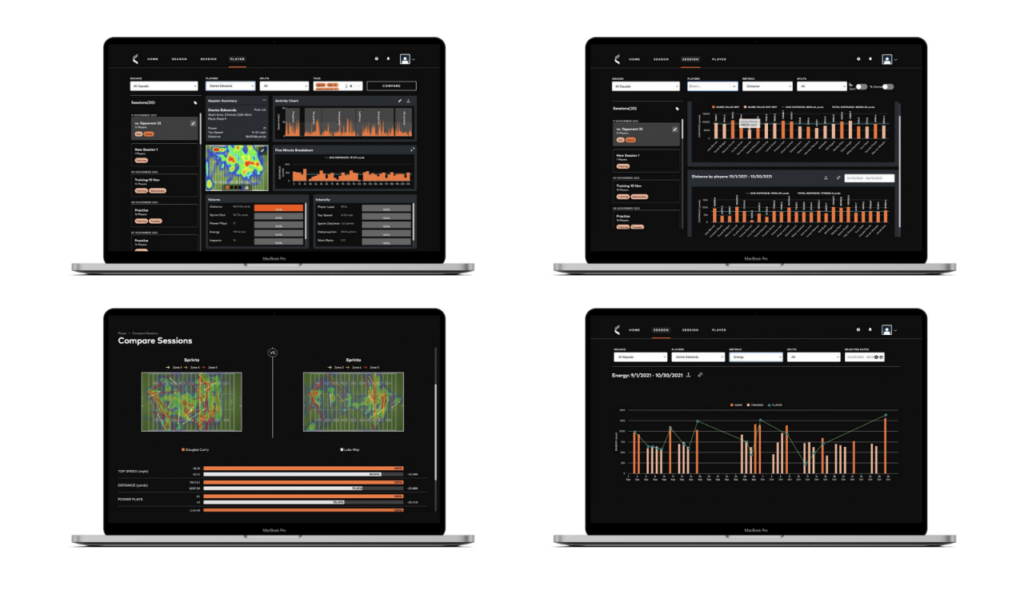
PROVIDE CLEAR, OBJECTIVE FEEDBACK TO YOUR ATHLETES
Catapult One tracks 10 core metrics including sprint distance, top speed, power and player load to inform your performance conversations with data and motivate your players to deliver the results.
ESTABLISH BENCHMARKS AND BASELINES
Set benchmarks, thresholds, and objectify your communication to your players by obtaining athlete-specific insights and team reports.
PREPARE YOUR ATHLETES FOR GAME DAY DEMANDS
Understand what is happening in a game to design your practice to best prepare your players to maximise those intense game day moments.
REDUCE THE RISK OF INJURY
Monitor and optimize how hard your athlete’s work ensuring they don’t under or over train keeping them healthy and injury-free to contribute when it matters on the field.
10. THE TEAM BEHIND YOUR TEAM
This report was developed by a collection of Catapult American Football Performance Experts who were formerly active coaches in the industry. These experts and the rest of the sports science team are committed to delivering world-class support to help you improve the performance of your athletes and team.
High-Performance Experts:
Our football-specific customer support team consists of 12 experienced performance practitioners and product specialists who deliver comprehensive set-up and training whenever and wherever you need it.
Local Help:
Catapult has a dedicated support team operating in more than 16 countries worldwide. In North America, we have 25 dedicated support staff so you can access quick, easy and reliable customer service that works for your team’s schedule.
Continued Professional Development:
As part of our commitment to delivering professional development opportunities for our customers, we coordinate client-led performance workshops and webinars that allow you to learn from some of the world’s leading practitioners.
Download a PDF of this report, Click here. Alternatively, visit Catapult.com.
Catapult exists to unleash the potential of every athlete and team on Earth. Operating at the intersection of sports science and analytics, Catapult products are designed to optimize performance, reduce the risk of injury, and quantify return to play. Catapult has more than 340 staff based across 24 locations worldwide, working with more than 3,650 elite teams in 137 countries globally.
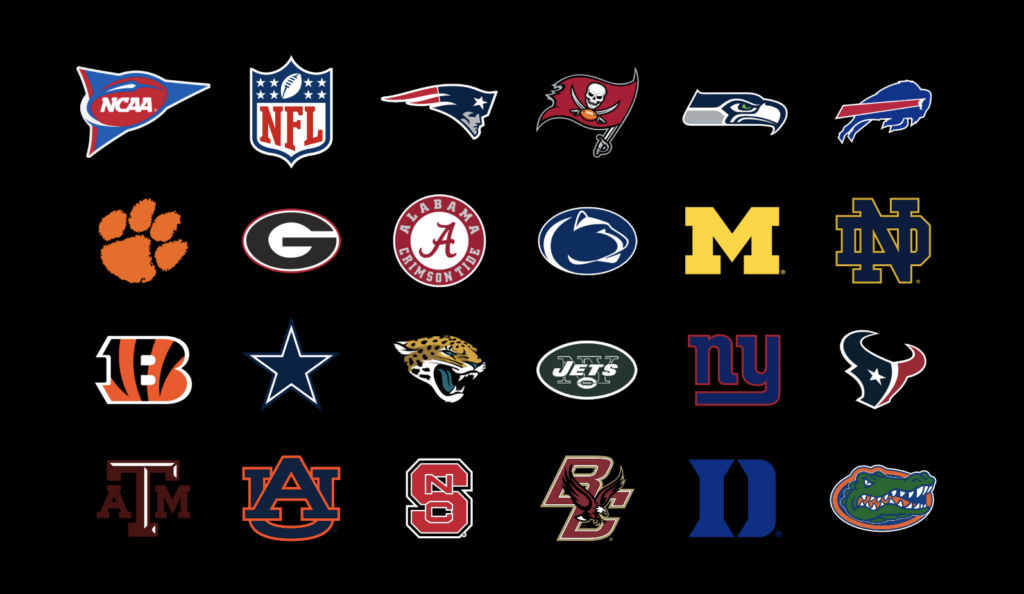
To learn more about Catapult and to inquire about accessing performance analytics for a team or athlete, visit us at catapultsports.com. Follow us at @CatapultSports on social media for regular updates.
WE EXIST TO UNLEASH THE POTENTIAL OF EVERY ATHLETE AND TEAM ON EARTH